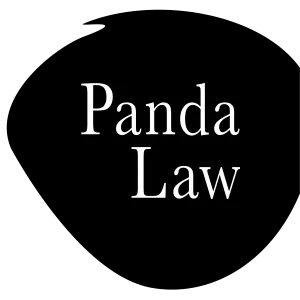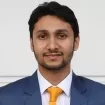In the theatre of life, communities play a leading role. They are the choruses singing in harmony, the strings that hold us together. Communities – the lifelines of culture, carriers of tradition, and harbours of shared experiences – form the very heart of Indian society. Dancing to the rhythm of our democracy, they cast their long shadows over the stages of individual and collective existence.
The Indian Constitution lays the cornerstone for our first layer of community, the bedrock of our nation's collective identity – our L1. It serves as the underlying script, guiding the dance of our diverse population. It holds the code, the ethos that we as Indians agree to live by, it sets the societal norms and governs our steps in the dance. The Constitution – the DNA of our community – encapsulates our ethos and aspirations, threading us into a singular tapestry of unity within our vast diversity.
Yet, in the arena of human interaction, the physical communities – our L2 – play out in a more immediate, tangible manner. These communities, termed 'social democracies' by Dr. B.R. Ambedkar, exist as physical manifestations of our constitutional principles, carving out our shared spaces. The communities, bustling with life, are the streets we walk, the neighbourhoods we dwell in, and the cities we build. They are where our feet touch the ground, where our hands shake in agreement, disagreement, friendship, and shared humanity. As per Dr. Ambedkar, a constitutional democracy rings hollow if the resonation of social democracy is absent.
Yet, we live in a world of paradoxes, a country that is at once ancient and young, digital and physical. We are a magnificent snake, a timeless creature with its head firmly in the 21st century, its body coiled in the 20th, and its tail brushing the bygone 19th. We are a living testament to change, resilience, and renewal, shedding our skin periodically, our current avatar less than eight decades old.
However, a closer inspection of the societal mirror reveals fractures, fragmentations, cracks within the unity. The reflection, though deeply rooted in history and shared identity, often seems 'broken up into fragments by narrow domestic walls.' The disruptive force of technology, the rapid rise of artificial intelligence and social media, seems to augment these fragmentations, amplifying the dissonance within the symphony of our society. This distortion echoes an unsettling melody, a potential weakening of the social democracy that Dr. Ambedkar championed. An erosion that could, in turn, undermine our constitutional and economic communities, the very foundation of our societal structure.
These cracks are not merely fractures within the fabric of our society, but also serve as a reflection of our democracy, the community at its very core. They bear testament to the fact that a society can only be as strong as the strength of its constituent communities, and that a communal divide is a shadow looming over our shared future.
As we continue to move and twirl in the dance of life, it becomes increasingly apparent that our dance floor is transforming. The societal contract, the rhythm that binds the society, the state, and the individual, is being fast renegotiated, changing the music to a different beat.
It is thus, of no shock, that in our exploratory dance, we find ourselves at the edge of the physical plane, peering into the infinite possibilities of cyberspace. The third layer of our community – our L3 – has taken root in this digital realm, charting its course towards the frontiers of web3 and the metaverse. This digital community, as distinct from its physical counterpart as the latter is from our constitutional base, represents a new dawn in our shared existence.
Balaji Srinivasan's concept of 'exit' resonates within this cyber domain, enabling a power shift unseen in the physical world. Exit begets alternatives. Alternatives incite reform. This philosophy is at the heart of our L3 communities. Not unlike our own constitutional community, which rose from the ashes of the exit from the Commonwealth of Nations, these digital communities offer an unprecedented level of freedom and flexibility. Unlike the physical constraints that bind us to our localities, districts, or states, cyberspace is boundless, offering endless alternatives.
These alternatives serve as the driving force for reform. In the digital world, every individual's voice can echo, every feedback can catalyse change. It is here that social democracies find a global stage, unimpeded by physical borders or societal hierarchies.
Dr. Ambedkar's vision of a social democracy aligns with this transformative landscape. Imagine him, with the principles of liberty, equality, and fraternity, writing the constitutions for these web3 communities. Imagine these principles translated into code, accessed through a DAO or similar systems, steering the course of these digital societies. In this interconnected world of 'associated living', democracy isn't a mere form of government; it's an embodiment of shared experiences, aspirations, and values.
Drawing from personal experience, the power of web3 communities has been exemplified by creation of a number of creator communities in India - with the Colours of India community being the flagbearer at the forefront In the midst of a global crisis, strangers connected over the ether, weaving a fabric of support, advice, shared secrets, and benevolence. Spaces such as Clubhouse, Discord , and Twitter Spaces served as digital town squares, bringing together individuals who would have otherwise remained isolated.
Now, such creator communities have become a testament to the harmonious co-existence of the IRL and online worlds, bridging gaps and building bonds. The seamless transition from the virtual to the physical world has been nothing short of magical.
But for the dance to continue, for the melody to remain harmonious, all layers of the community need to perform in unison. Just like a tree, each layer – the roots, trunk, and leaves – draws strength from the others. A weakness in one implies a weakening of all.
Web3 communities, while distinct, are part of this interconnected system. Yet they possess superpowers that set them apart: a sense of acceptance that transcends societal norms, a mutually assured support system, the liberating power of anonymity, an open arena for learning and trading, and a resilience that empowers us to navigate the vagaries of the future.
As the climate threatens our geographic stability and AI challenges our economic foothold, the storm clouds gather. The post-storm world is yet unwritten, but it's clear that those within strong communities will fare better. Our hunter-gatherer ancestors understood this well, drawing strength from their communities in the face of the unknown.
As we step into the future, web3 communities offer us a platform for this collective strength, embodying the core principles of social democracy, and providing a springboard for individual and societal growth. In this grand dance of democracy, it's not about having a million followers on closed platforms, but about having a thousand true fans on open, decentralized platforms.
In this intertwining dance of the layers of communities, it's about remembering that we are, above all, a part of a shared narrative, a shared dance – the dance of democracy.
The content of this article is intended to provide a general guide to the subject matter. Specialist advice should be sought about your specific circumstances.

